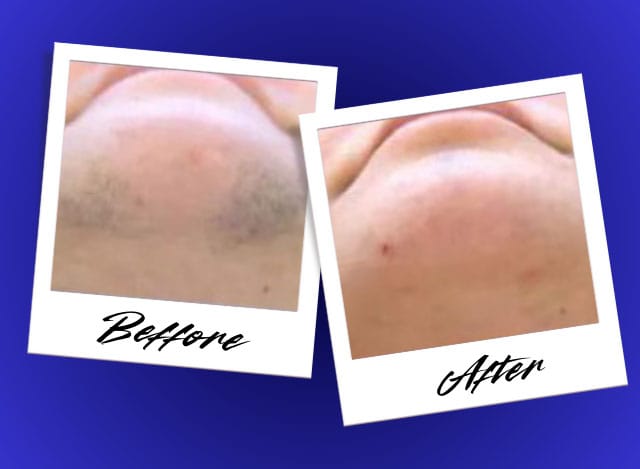Laser Hair Removal
What is Laser Hair Removal ?
“Laser Hair Removal” is a medical procedure that uses a concentrated beam of light (laser) to remove unwanted body hair.
It is a non-invasive medical procedure that uses highly concentrated light to target hair follicles under the skin.
Unlike traditional hair removal methods, laser hair removal is designed to provide long-lasting results by impairing the hair’s ability to regrow.

DL860 Diode Laser Hair Removal

BR318 Diode Laser Hair Removal

DL827 Diode Laser Hair Removal
History of Laser Hair Removal
Laser hair removal has been performed experimentally for about twenty years before becoming commercially available in 1995–1996.
In the 1960s, lasers were primarily used for scientific research and experimental surgeries. In 1963, Theodore Maiman developed the first working laser, setting the stage for technological advancements. But it wasn’t until the late 1970s and 1980s that scientists started exploring lasers for hair removal.
By the 1990s, the FDA (Food and Drug Administration) began approving lasers for hair removal, making it accessible to the public. With continuous innovations, today’s lasers are safer, more effective, and can treat a broader range of skin tones and hair colors.
How Does Laser Hair Removal Work?
The basic treatment principle is biological effect.
The 808nm wavelength laser can effectively penetrate the normal skin to reach the follicle site.
The light energy of laser emitted by the machine is easily absorbed by the pigment (melanin) in the hair follicle, which converts it into heat and cause slowing down or even completely stopping hair growth in that area, without damaging the epidermal tissue.

The Process of Laser Hair Removal
- Preparation:
The treatment area is cleaned, and a cooling gel or numbing cream may be applied for comfort.
- Laser Application:
A handheld laser device is directed at the skin. The laser’s light targets the pigment in the hair follicle, heating it without harming the surrounding skin.
- Follicle Damage:
The heat from the laser damages the hair follicle, disrupting its growth cycle and reducing its ability to grow hair in the future.
- Multiple Sessions Needed:
Since hair grows in cycles, multiple sessions (typically 6-8) are required for effective and lasting results. Each session targets a different cycle of hair growth to ensure thorough treatment.
Types of Lasers Used in Hair Removal
There are several types of lasers commonly used in hair removal:
- Alexandrite Laser:
Effective for light to olive skin tones, providing fast treatment for large areas.
- Diode Laser:
Suitable for a wide range of skin tones, particularly effective on light to medium skin tones with dark hair.
- Laser:
This laser is ideal for darker skin tones as it penetrates deeper into the skin without targeting the melanin in the upper layers.Nd
- Ruby Laser:
One of the earliest types, less commonly used today due to its limitations with darker skin tones but effective for fine, light hair.
Laser Hair Removal vs. Other Hair Removal Methods
Here’s a comparison of laser hair removal with other common methods:
Method
How It Works
Laser Hair Removal
Targets hair follicles with laser energy to impair growth
Shaving
Cuts hair at the skin’s surface
Waxing
Pulls hair out from the root
Plucking / Tweezing
Pulls individual hairs from the root
Depilatory Creams
Chemically dissolves hair
Pain Level
Duration of Results
Suitability
Mild to moderate (cooling mechanisms help)
Long-term (several months to years)
Most skin and hair types (customizable)
Minimal
Several weeks
All skin types; fast but temporary
Moderate to high
A few days
Suitable for larger areas, but can irritate sensitive skin
Moderate (localized)
2-4 weeks
Best for small areas (eyebrows, stray hairs)
Minimal
Up to a week
Can cause irritation; suitable for larger areas
Who Can Use Laser Hair Removal?
Laser hair removal has become more versatile and can now treat various skin tones and hair types.
However, it tends to be most effective on those with darker hair and lighter skin due to the contrast, as the laser targets pigment.
With advancements, newer laser technologies like the Nd
and diode lasers make it possible for individuals with darker skin tones or finer hair to undergo successful treatments.
It’s always best to consult with a licensed professional to determine the right type of laser for your skin tone and hair color.

Where Can It Be Used?
Common treatment locations include legs, armpits, upper lip, chin and the bikini line. However, it's possible to treat unwanted hair in nearly any area, except the eyelid or surrounding area.

Benefits of Laser Hair Removal
Here are some of the major benefits of opting for laser hair removal:
- Long-Term Results:
After a full treatment series, many people enjoy smooth, hair-free skin for months to years, with only occasional maintenance sessions.
- Precision:
The laser targets hair precisely, leaving the surrounding skin undisturbed. This makes it ideal for delicate areas like the upper lip, chin, and bikini line.
- Time Efficiency:
Sessions are quick. Each treatment can be as short as 10-20 minutes for small areas like the upper lip or underarms, while larger areas like legs or back may take around 30-60 minutes.
- Cost-Effective Over Time:
While laser hair removal may seem expensive upfront, it can save money in the long run by reducing the need for shaving, waxing, or other hair removal methods.
Cautions and Considerations for Laser Hair Removal
Laser hair removal is generally safe, but there are a few things to consider:
- Side Effects:
Some individuals may experience mild redness, swelling, or itching in the treatment area, which usually subsides within a few hours to days.
- Avoid Sun Exposure:
Direct sun exposure on the treatment area should be avoided before and after sessions, as it can increase the risk of pigmentation changes.
- Skin Tone and Hair Color:
Those with light hair and darker skin tones may find it less effective, although some lasers are designed to address this.
- Not a One-Time Solution:
While it offers long-term results, laser hair removal typically requires multiple sessions spaced about a month apart to be effective.
- Avoid Waxing or Plucking:
Shaving is allowed, but avoid waxing and other forms of hair removal to keep the follicle intact, so the laser can effectively target it.
Conclusion
Laser hair removal has revolutionized the way people approach hair removal, offering a longer-lasting and cost-effective alternative to traditional methods.
With technological advancements making the treatment safer and more accessible, laser hair removal can be a great option for those seeking smooth, hair-free skin.
Remember to consult with a licensed professional to customize the best plan for your skin type and hair color and always follow post-treatment care instructions to achieve optimal results.






